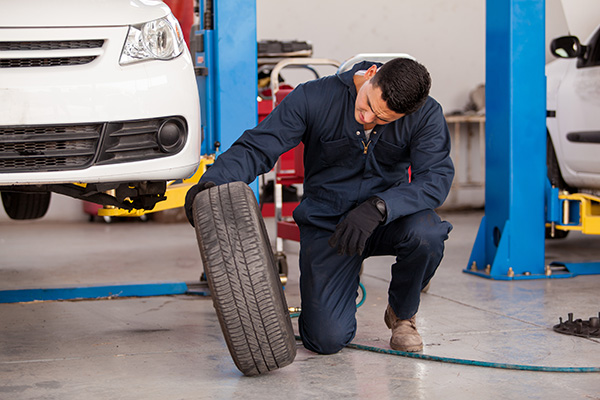
Tire rotation might not seem like a big deal, but it is essential for keeping your car safe, efficient, and handling the way it should. It’s one of the simplest forms of maintenance, yet many drivers forget to do it regularly. If you’ve noticed uneven tread wear or your car doesn’t feel as smooth on the road as it used to, it might be time to check when your tires were last rotated.
Why Tire Rotation Matters
Each tire on your vehicle wears differently depending on its position. The front tires handle more of the steering and braking load, while the rear tires often wear more evenly. On front-wheel drive cars, the front tires also provide the power to move the vehicle, which adds to the wear.
By rotating your tires regularly, you spread out this wear more evenly. That helps the tires last longer, improves handling, and can even boost fuel efficiency. It also keeps the tread depth more consistent, which improves grip in rain or snow and helps prevent hydroplaning.
Recommended Rotation Intervals
Most automakers recommend rotating your tires every 5,000 to 7,500 miles. If you’re already coming in for an oil change around that mileage, it makes sense to do both at the same time. It’s a quick process that doesn’t require any major disassembly, and it can help you avoid replacing tires sooner than necessary.
Some vehicles may require different intervals based on their design. For example, performance cars or vehicles with staggered tire setups (where front and rear tires are different sizes) may have more specific requirements. Always check your owner’s manual or ask a technician familiar with your car.
Signs You May Have Skipped a Rotation
If the front tires are more worn than the rear, or if you notice that one tire has a lot less tread than the others, uneven wear could be the result of skipped rotations. You may also feel changes in how the vehicle rides or steers. Common symptoms include:
- Vibrations at highway speeds
- Pulling to one side while driving
- Tread depth that varies between tires
- Road noise that gets louder over time
These are all signs that the tires aren’t wearing evenly, and rotating them may help extend their life and restore smoother performance.
Front-Wheel, Rear-Wheel, and All-Wheel Drive Considerations
On front-wheel drive cars, the front tires do most of the work, which makes them wear out faster. That’s why regular rotation is even more important. On rear-wheel drive cars, the wear is more balanced, but the rear tires still benefit from being rotated to the front.
All-wheel drive vehicles wear tires differently at each corner. Tire rotation on these systems is critical not just for even wear but also to avoid stress on the drivetrain. If one tire has significantly more or less tread than the others, it can strain the transfer case or differentials.
The Right Rotation Pattern Matters
There’s more than one way to rotate tires. The best pattern depends on the type of tires you have and whether your vehicle is front-wheel, rear-wheel, or all-wheel drive. Common rotation patterns include:
- Forward cross: For front-wheel drive
- Rearward cross: For rear-wheel drive
- X-pattern: A universal pattern suitable for many vehicles
- Side-to-side: Used when tires are directional and can’t be swapped front to back
If your tires are directional or staggered, they may need to stay on the same side or be rotated only front to rear. A technician can help choose the correct pattern for your setup.
Tire Rotation and Auto Repair in Plano to Keep You Rolling Smoothly
Neglecting tire rotation might not seem like a big issue at first, but over time, it can shorten tire life and affect how your car handles. Keeping up with this simple service helps you save money on tire replacements and keeps your ride more comfortable and predictable.
Visit Davenport Motor Company in Plano, TX, for Tire Rotation and Service
At Davenport Motor Company, we offer quick, professional tire rotation services as part of our regular maintenance options. If it’s been a while since your last rotation or you’re not sure what your tires need, we’ll inspect the tread, check for uneven wear, and recommend the best schedule for your vehicle.
Book your next visit today and keep your tires in great shape for the road ahead.